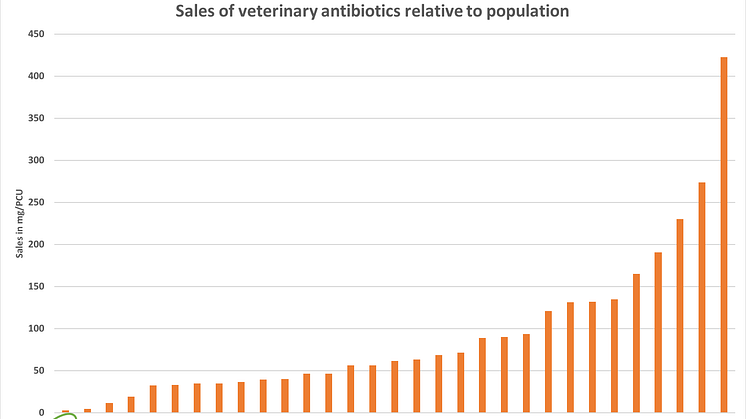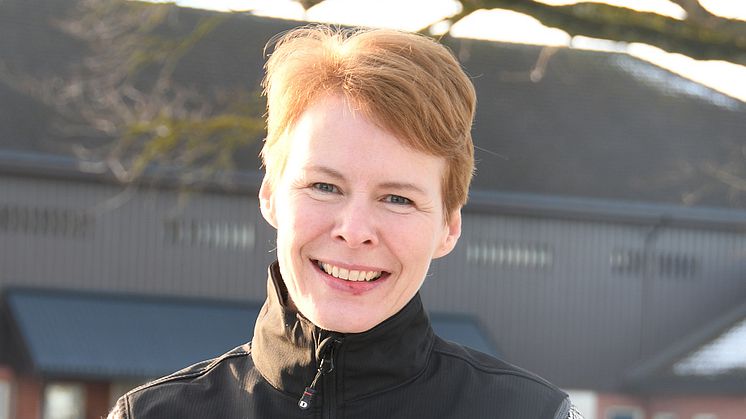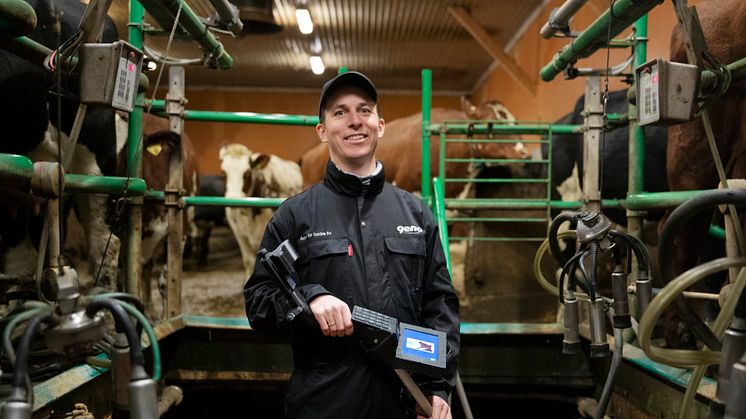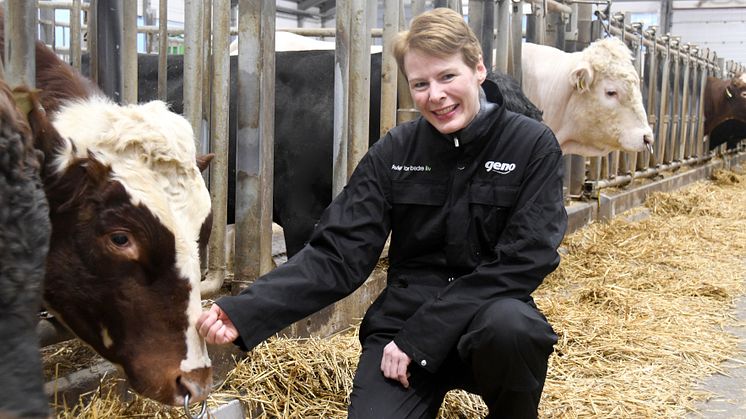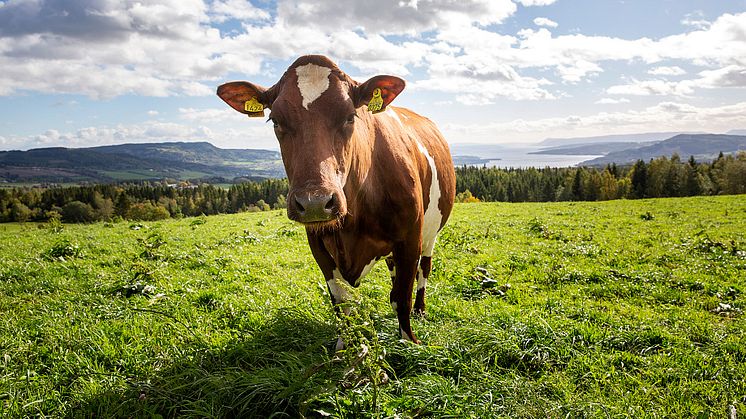
Press release -
Coronavirus focuses attention on importance of high health status and low reliance on antibiotics in cattle
Human health and saving lives are priorities for governments around the world as they put in measures to combat the coronavirus. These are demanding times for medical staff on the front line, and for leading researchers as they look for short and long term measures of fighting infection in populations.
“The issue of antibiotic resistance has emerged as an important issue when it comes to the possibility of treating diseases associated to coronavirus and it is important that this debate is being raised at an international level,” says Genos’ CEO Kristin Malonæs.
“There is a global awareness that we need to reduce the reliance on antibiotics in human health. This, as we know, has implications for livestock production – for meat and milk produced for the human food chain.”
Unique among cattle breeding programs, the Norwegian Red scheme run by Geno has focused on high health status traits since the mid-1970s. “We have deliberately chosen bulls and cows within our breeding program that provide the healthiest offspring and daughters with good fertility,” adds Ms Malonæs.
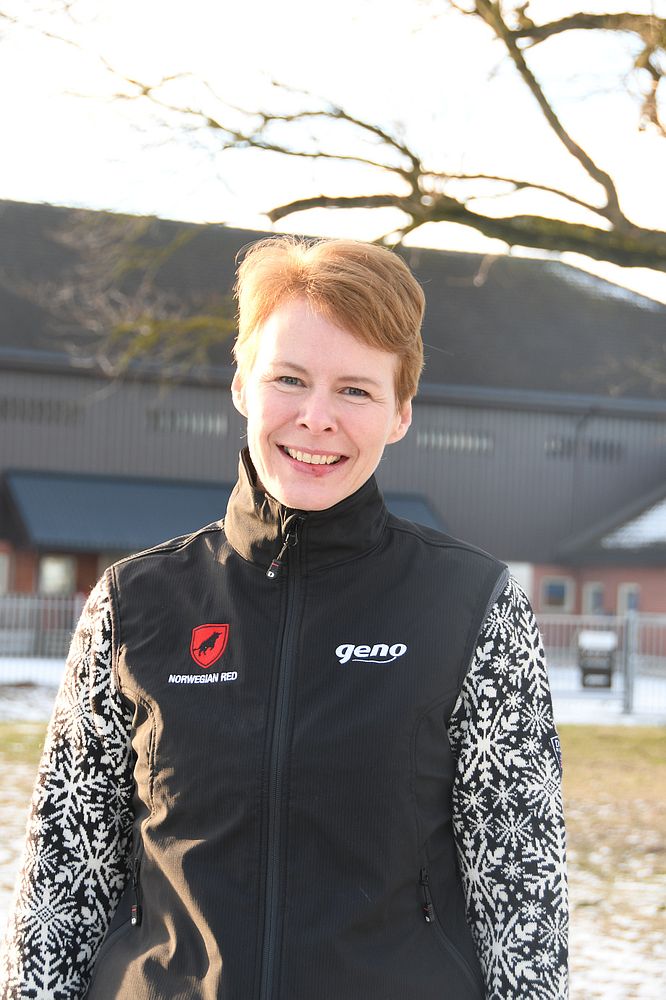
Photo: Kristin Malonæs, CEO Geno SA. Photographer: Rasmus Lang-Ree
“While the Norwegian Red, that is widely used in cross breeding dairy programs across the world, has kept pace with production improvements, our emphasis on a wider range of traits compared with many other dairy breeding programs, means that health traits are well ahead of others and make a valuable contribution to health and welfare of many dairy herds in commercial milk and meat production.
“High health status cattle have far less reliance on medications including antibiotic use. Geno’s emphasis on health and fertility in breeding has been the right strategic move.”
Among international scientists, the Norwegian Red breeding program is considered a welfare and environmentally friendly system. “This ‘green’ recognition reflects our four or so decades of breeding. We have always considered that the combination of healthy, fertile and productive livestock is important for farmers and their business, and for the production of safe and high quality food for consumers.
“Healthy animals that do not need the degree of veterinary care and medication required by those more pre-disposed to, for example, fertility issues or udder infections.”
Norway’s low antibiotic use
Norway’s drive to adopt responsible use of antibiotics in livestock and humans has been long term. The Norwegian Government's national strategy on antibiotic resistance stated that antibiotic use in food-producing animals should be further reduced by 10% from 2013 to 2020.
In 2000 the country’s Veterinary Institute set up the NORM-VET monitoring program for antimicrobial resistance in the veterinary and food production sectors in 2000. Its 2018 report showed a 17% decline in antibiotic consumption in livestock production from 2013 to 2018.
“The goal of reducing antibiotic use in agriculture has led to a change in treatment strategies, better preventive health work and increased emphasis on health in breeding,” adds Ms Malonæs.
“The progress we have seen in breeding for improved health traits is an important driver in this positive development. Udder health has been included in the Norwegian Red breeding goals since 1978, which has contributed to a considerable decline in veterinary treatments and antibiotic use for more than three decades.”
Commenting on the Norwegian Red breed success globally, head of Geno International Kate Stai comments that dairy producers choose Norwegian Red genetics to improve health and fertility traits in their dairy herds. Success in these areas has been demonstrated through trials carried out in Ireland, the US and China where Norwegian Red sires have been used in Holstein herds.
Healthy animals in demand
She comments that overseas visitors are impressed with the Geno’s breeding program’s focus on disease reduction. “And they are particularly encouraged with Norwegian farmers’ long term willingness and ability to register data, through a national system,” says Ms Stai. “This commitment, over many years, has been a major contributor to herd health management and especially to our Geno breeding programs.”

Photo: Kate Stai, Head of Geno International Markets & Sales, Geno SA. Photographer: Jan Arve Kristiansen
And this emphasis on breeding for healthy and welfare traits has led to low reliance on antibiotic and other medicines in Norwegian cattle; characteristics that are transferred through the Norwegian Red genetics for dairy and beef breeding programs internationally.
‘Breeding for better lives is Geno’s mission. “We will continue to focus on health in our breeding program,” adds Geno CEO Kristin Malonæs. “It benefits individual animals, the farmer and the consumer.
“We are seeing increased demand for Norwegian Red genetics in crossbreeding with other breeds, to achieve more efficient, long lasting and low maintenance animals with better fertility and herd health and carrying lower veterinary and medicine costs. We are pleased to contribute in this way, especially at this difficult time, with our sustainable solutions.”
Low antimicrobial use
The Norwegian livestock industry published its joint action plan on microbial resistance in 2017**, noting Norway’s beneficial position with respect to microbial usage and any microbial resistance.
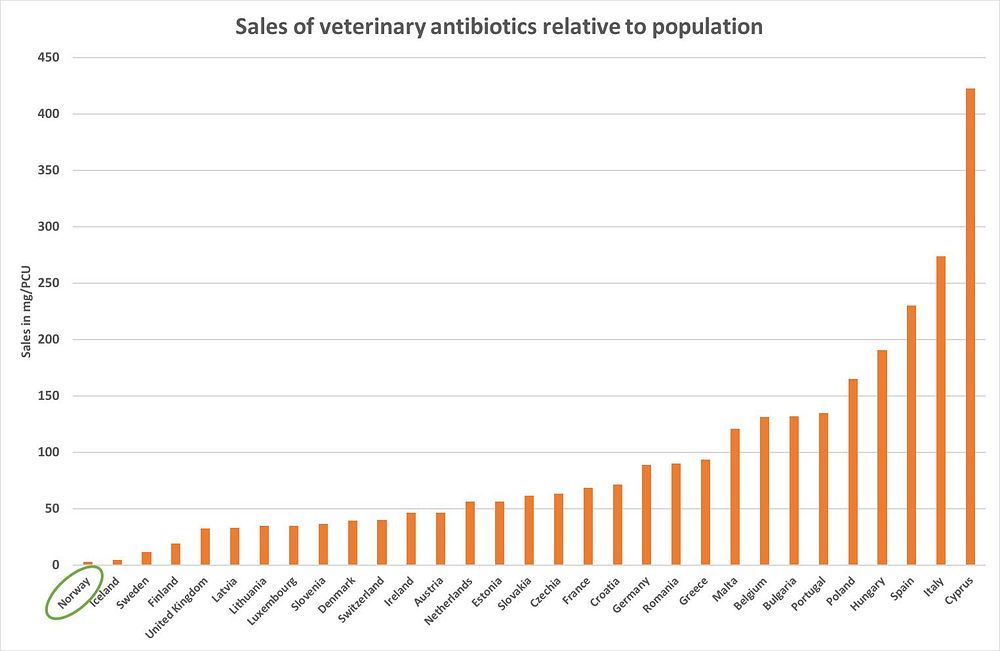
Graph: Sales, in tonnes of active ingredient, of veterinary antimicrobial agents marketed mainly for food-producing animals1, PCU and sales in mg/PCU, by country, for 2017*
This supported data published in The European Medicine Agency’s report 2016* that compared the sale of veterinary microbial agents among 30 European countries and includes trends in sales from 2010 to 2016. Norway, along with Iceland, consistently ranked among the lowest across the six-year period.
“The low level of sales of antimicrobials to food producing animals in Norway reflects the priority that Norway has placed in its breeding programs to target healthier animals,” says concludes Ms Malonæs. “It’s also relevant that our vets are not allowed to profit from selling antimicrobials and other drugs, so there is no economic incentive to promoting their use here in Norway.
Topics
Categories
Norwegian Red is the main dairy cattle breed in Norway, developed by Geno SA. Geno SA is a farmer-owned cooperative that has been breeding Norwegian Red dairy cattle since 1935. Geno sells over 1 million doses of semen from elite Norwegian Red bulls each year and distributes genetic material to more than 30 countries worldwide. Geno's vision: Breeding for better lives. Geno's head office is in Hamar, Norway.


